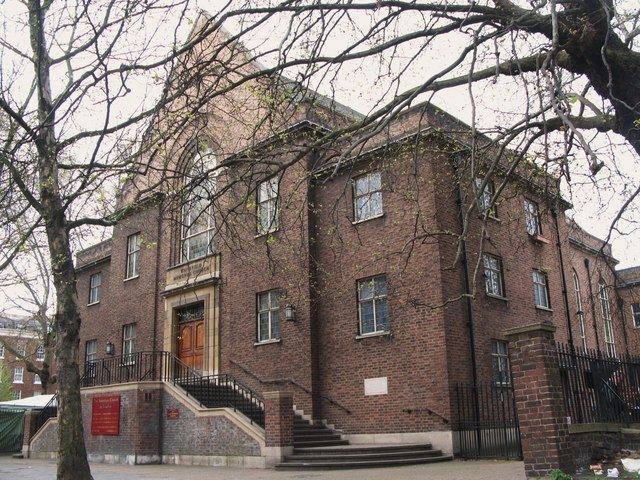Country United Kingdom | London borough London Borough of Camden | |
 | ||
Denomination Congregational / United Reformed Similar St Andrew - Stoke Newington, St Audoen within Newgate, All Saints Church - Haggerston, Abney Park Chapel, St John the Baptist upon Wal | ||
Whitefield's Tabernacle on Tottenham Court Road, a church in London, England, also called Tottenham Court Road Chapel, was built in 1756 for George Whitefield. It was enlarged in 1759. John Wesley preached a sermon "On the death of the Rev Mr George Whitefield" both here and at Whitefield's Tabernacle, Moorfields, in 1770.
The original chapel stood on the west side of Tottenham Court Road, between Tottenham Street and Howland Street, surrounded by fields and gardens. Its foundation stone was laid by Whitefield in June 1756, and it opened for its dedication service on 7 November of the same year. Its initial popularity led to plans being drawn up for enlargement, and these were quickly put into effect in 1759. Beneath the chapel, a vault was also prepared; it was Whitefield's hope that he could be interred here along with the two Wesleys, but he died and was buried in Newburyport, Massachusetts.
In 1890 the building was taken down and re-erected as Whitefield's Central Mission. In 1895 the coffins buried in the crypt (including Elizabeth Whitefield, but excluding the lead coffin of Augustus Toplady) were moved to Chingford Mount Cemetery in north London.
From 1903 to his death, the Church's Minister was Silvester Horne, the father of the broadcaster Kenneth Horne.
On Palm Sunday 1945 the church building was destroyed by the last V-2 rocket to fall on London. A new chapel was built in 1957, and the grounds became a public thoroughfare.
Since 1976 the latest chapel has been the home of the American International Church, having been offered to them by the United Reformed Church when they were forced to move from their building in North Audley Street in 1972. Currently, it houses both the London Chinese Lutheran Church and the American Church in London. The adjoining grounds have recently had a series of interpretive panels designed for them by Groundwork Camden, with funding from the Heritage Lottery Fund. These depict various scenes in the history of the chapel, Whitefield's links to Selina, Countess of Huntingdon, and the abolition of slavery as represented by Olaudah Equiano who came to be associated with Calvinist Methodism, and came to live close to Whitefield's Chapel shortly before his death.
